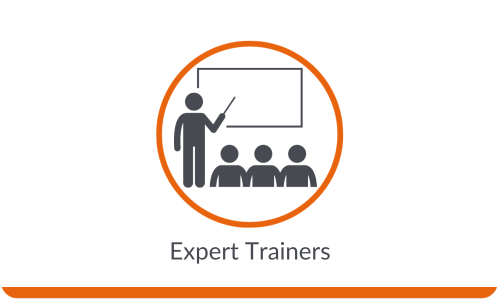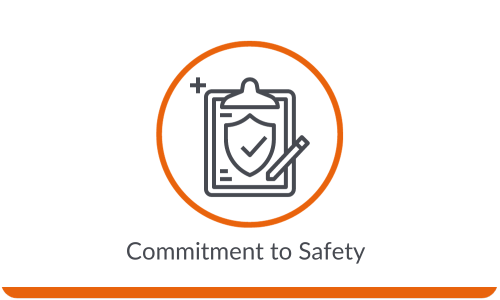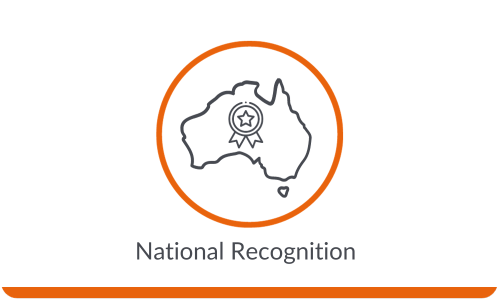Chief Fire Warden Training
REQUEST A GROUP TRAINING QUOTE NOW!
What people are saying
Overview | Chief Fire Warden Training
Our Chief Fire Warden Training, specifically designed for workplace environments, offers an all-encompassing approach by combining both Fire Warden and Chief Warden training. This integrated course is ideal for a variety of industry sectors, tailor-made to address the distinct safety challenges and requirements of your workplace, ensuring that the training is both relevant and highly beneficial for your team’s fire safety leadership roles.
Conducted within your own workplace setting, our comprehensive Chief Fire Warden Training provides a dynamic and interactive learning experience. We focus on real-life fire emergency scenarios that accurately reflect your workplace conditions, ensuring that the skills and knowledge acquired are not only effective but also immediately applicable to both fire warden and chief warden responsibilities.
Designed to integrate seamlessly with your organisation’s schedule, our training minimises disruption to your daily operations. The program covers a broad spectrum of skills, from basic fire response to advanced aspects of emergency leadership, situational awareness, and comprehensive emergency preparedness. This equips individuals with the expertise required to proficiently oversee and coordinate fire safety strategies and responses as both fire wardens and chief fire wardens.
Choose our Chief Fire Warden Training for a strategic and impactful method to enhance your team’s fire safety and emergency management skills in an industrial setting. This integrated approach is a proactive step towards fostering a safer, more adept emergency response team.
Chief Fire Warden Training: Customised for Key Industry Sectors
Our comprehensive Chief Fire Warden Training is expertly tailored to meet the specific fire safety and emergency management needs of a wide range of industries. By combining Fire Warden and Chief Warden training, we ensure a cohesive and effective response to fire emergencies. Here’s how our training is customised for different sectors:
- Manufacturing and Industrial: This sector faces significant fire risks due to machinery, chemicals, and flammable materials. Our training provides a structured response strategy, crucial for these high-risk environments.
- Healthcare Facilities: We focus on evacuation coordination in healthcare settings, catering to the safe evacuation of patients, especially those with limited mobility, essential in these sensitive environments.
- Educational Institutions: Our training is tailored to manage evacuations in schools and universities, ensuring the safety of a diverse student body and staff in complex buildings.
- Hospitality Industry: In the hospitality sector, we emphasise coordinated fire safety strategies for hotels and resorts with their intricate layouts and high guest turnover.
- Corporate and Office Settings: For high-rise office buildings and corporate campuses, our training provides a clear chain of command in fire emergencies for efficient evacuation and safety management.
- Retail and Shopping Centres: Training for retail environments covers managing high foot traffic and complex layouts, focusing on coordinated emergency evacuation procedures.
- Construction Sites: With inherent fire risks from construction materials and activities, our program ensures a structured emergency response in these settings.
- Chemical and Petroleum Industries: We offer specialised training for handling hazardous materials, essential for comprehensive fire safety in these industries.
- Transport and Logistics: Our training is designed for airports, shipping companies, and logistics centres, focusing on coordinated fire safety strategies in these dynamic environments.
- Public Sector and Government Buildings: For high-occupancy public buildings, our training ensures a structured approach to fire safety and evacuation procedures.
- Entertainment and Recreational Venues: We tailor our training for managing fire emergencies effectively in crowded venues like cinemas, theatres, and sports stadiums.
By choosing our Chief Fire Warden Training, tailored to your specific industry sector, you ensure that your team is equipped with the skills and knowledge for effective leadership and management during fire emergencies. This training is a vital step in enhancing safety and preparedness in various critical sectors.
PROGRAM DETAILS
Students who are deemed competent will receive a Statement of Attainment, which is recognised under the Australian Qualifications Framework. This training is nationally recognised:
- PUAFER005 Operate as Part of an Emergency Control Organisation
- PUAFER006 Lead an Emergency Control Organisation
Intrinsic Safety Pty Ltd (RTO45803) is responsible under the National Vocational Education and Training Regulator Act 2011 for the quality of the training and assessment being delivered in this course and for the issuance of all AQF certificates.

Course Fees
- Group Bookings: Contact us to discuss a customised quote.
Refunds & Fee Protection
- Your Guide to Policies: For detailed information on refunds and fee protection, please consult our Pre-Enrolment Participant Handbook.
Payment Information
- Group Bookings: Custom payment solutions for every team. We’ll work with you to set up terms that align with your needs and ours.
This course can be delivered/assessed in the workplace or at a facility organised by Intrinsic Safety Pty Ltd (RTO 45803).
Course Duration & Modes
- Face to Face Training: 7-hour intensive, hands-on session.
- Blended/Refresher Training: Mix of online pre-learning and 5-hour practical session, ideal for skill updates.
Each format is tailored to different learning styles and schedules, ensuring effective and efficient Chief Fire Warden Training.
Our detailed course outline ensures a thorough grasp of:
General Overview and Regulations
- Regulations and Standards
- Facility Emergencies Regulatory Requirements
- Types of Facility Emergencies
- Identifying Facility Emergencies
- Situations That Can Lead To Emergencies
- Organisational Policies And Procedures
- ECO Authority
- Command, Control, And Coordination Function
- Undertaking Pre-Emergency Planning
- Facility Emergency Plan Components
- Monitoring Currency Of Facility Emergency Plan
Emergency Control Organization (ECO) Specifics
- ECO Structure
- Means Of Identifying ECO Members
- ECO Role Colour Codes
- Ensuring ECO Identification Availability
- Selecting And Appointing ECO Members
- Emergency Planning Committee (EPC)
- Roles And Responsibilities
- Structure
- Key Functions
- EPC Meetings
- Implementing Recommendations / Reports
- Following ECO Instructions During Emergency
Training and Exercises
- ECO Training Requirements
- Chief Warden / Communication Officer Training
- First Attack Fire Fighting Training Requirements
- Emergency Response Team Training
- Occupants And Visitor Training
- Nationally Recognised ECO Training
- Emergency Response Exercises
- Emergency Response Exercise Frequency
- Exercise Briefings And Debriefings
Emergency Procedures and Response
- Facility Emergency Response Procedures
- Emergency Response Procedure Structure
- Implementing Emergency Response Procedures
- Typical Behaviour During Emergencies
- Dynamic Risk Assessment
- Occupants Who May Require Assistance
- Personal Emergency Evacuation Plans (PEEP)
- Key Components Of A PEEP
- Purpose Of A PEEP
- Storage Of PEEP Documents
- Emergency Stations
- Ensuring Emergency Stations Are Attended
- Criteria For Positioning Emergency Equipment
- Identifying Location Of Emergency Equipment
- Reporting Emergencies
- Information To Be Provided
- Alerting Occupants
- Emergency Warnings
- Alert And Evacuation Tones
Communication and Decision Making
- Role Of Emergency Services
- Authority Of Emergency Services Over ECO
- Liaising With Emergency Services
- Chief Warden Emergency Assessment
- Initiating An Action Plan
- Decision Making In An Emergency (OODA Loop)
- Providing Direction To The ECO
- Briefing The ECO
- SMEACSQ Briefing Format
Leadership and Coordination During Emergencies
- ECO Leadership Responsibilities During Emergency
- Progression Of Emergency Situations
- ECO Actions Taken To Mitigate Emergency
- Evacuation Options
- Selecting An Evacuation Option
- Assessing Evacuation Assembly Area Suitability
- Identifying The Location Of Assembly Areas
- Assessing Shelter In Place Location Suitability
- Assessing Lockdown Location Suitability
- Preparing Work Area For Evacuation
- Issuing An Evacuation Order
- Maintaining An Incident Log
- Precautions To Ensure Safety During Emergencies
- Conducting An Evacuation
- Providing Assistance During Facility Evacuation
- Alternative Evacuation Paths / Methods
- Accounting For Occupants
- First Aid Assistance During Emergencies
- Monitoring Evacuation Status
- Preventing Entry To Affected Areas
Post-Emergency Procedures
- Post-Evacuation Actions
- Considerations For Re-Entry To The Facility
- Key Stakeholder Support To Re-Entry Process
- Authorising Re-Entry
- Post-Incident Reporting
- Report Of Actions Taken
- Record Keeping
- Post-Emergency Debriefing
- Post-Emergency Debriefing Content
Assessment Methods
We provide a well-rounded assessment process that encompasses both practical tasks and scenarios, as well as written theory assessments, throughout the training. This comprehensive approach ensures a thorough evaluation of your skills and knowledge, allowing you to demonstrate your competency in real-world application and theoretical understanding.
Specific assessment tasks to be undertaken include:
- Knowledge Assessment
- Develop Pre-Emergency Plan – Practical
- Simulated Emergency Response Drill – Practical
- Emergency Equipment Deficiency Report – Practical
- Emergency Response Drill Report – Practical
- Develop a Facility Emergency Plan – Practical
- Report for Emergency Planning Committee – Practical
Entry Requirements
- Pre-Course Study: Depending on the course mode, online pre-course work may be required before the face-to-face session.
- Online Study Requirements: A computer, smartphone, tablet, or similar device with internet access is needed for online or pre-course studies.
For comprehensive details on your rights and responsibilities, including our complaints and appeals process, kindly refer to the Pre-Enrolment Participant Handbook on our website.
We’re committed to fostering an enriching learning environment. Key to this is understanding your Language, Literacy, Numeracy (LLN), and Digital Literacy skills, essential for your course success.
LLN Evaluation Verification
- Assessing Your Needs: Check if you need an LLN Evaluation based on your prior qualifications through our LLN Evaluation Verification Form.
Digital Literacy Checklist
- Embracing Technology: Complete our Pre-Enrolment Digital Literacy Checklist to help us tailor our support to enhance your digital skills.
Formal LLN Evaluation
- Tailored Support: If required, you can complete our Formal LLN Evaluation online, helping us understand your skill levels for personalised support.
These tools ensure you start your course with all the support you need for a successful learning journey. For any questions or extra assistance, feel free to contact our support team at [email protected].
REQUEST A GROUP TRAINING QUOTE NOW!
Pre-Enrolment Participant Handbook
Intrinsic Safety Pty Ltd (RTO 45803) offers a detailed pre-enrolment participant handbook for those interested in our programs. This handbook helps you understand your rights when you enrol with us.
We advise you to read and understand the handbook thoroughly before enrolling in any nationally accredited training program offered by Intrinsic Safety Pty Ltd. This ensures you are well-informed about the enrolment process and the program details.
If there is anything in the handbook where you require further clarification, please do not hesitate to call Intrinsic Safety on 1300 990 336 and one of our friendly team members will be more than happy to assist you.
LLN and Digital Literacy
You can complete these activities, using the links below now, or once you have enrolled:
- LLN Evaluation: It’s important for us to understand your language, literacy, and numeracy skills to best support your learning. Please complete the LLN Evaluation Verification, accessible HERE.
- Digital Literacy Checklist: To ensure you’re prepared for our digital learning environment, please fill out the Pre-Enrolment Digital Literacy Checklist available HERE.

Now is the time to get qualified.
discover our other training courses
Intrinsic Safety is an established, trusted, quality training provider with an extensive list of corporate clients and individuals who have attended our training courses over the years in a variety of learning areas:
REQUEST A GROUP TRAINING QUOTE NOW!
Ready to start your training with Intrinsic Safety?
Enrol Now
Find and enrol in the course you need to complete today.
Call Us
Speak to one of our Training Specialists Monday – Friday from 7:30am – 5pm (AEST).
Submit an Enquiry
Not in a rush? Simply submit your enquiry and we look forward to speaking with you shortly.
Locate Us
Looking for our location details? We deliver courses throughout Australia.
Why Study with Us?







